| AMBASSADOR'S JOURNAL |
| Return to India |
If the goal of leprosy elimination is to be achieved, then what happens in 2004 will be crucial. Yohei Sasakawa returned to the country with the biggest caseload to attend a key conference designed to accelerate momentum toward this goal.
He considers it very significant that it was inaugurated by the president of India. |
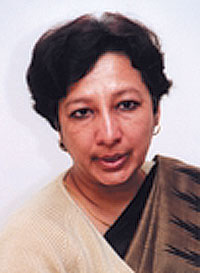
Mrs. Rita Teaotia |
| |
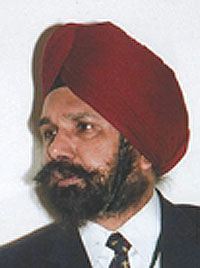
Dr. G.P.S. Dhillon |
| |
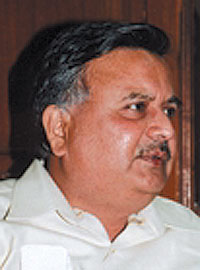
Dr. Raman Singh |
| |
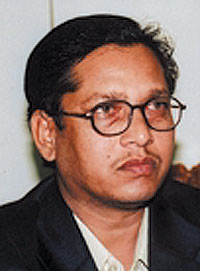
Dr. Krishnamurthy Bandhi |
| |
| |
| RAIPUR |
My first trip of 2004 was to India, where I attended the National Conference on the Elimination of Leprosy from January 27 to 30. Held in Raipur, state capital of Chhattisgarh, it was sponsored by the International Leprosy Association, the Indian government, the government of Chhattisgarh and major partners in the fight against leprosy.
Speaking at the opening ceremony, India's president, Dr. A.P.J. Abdul Kalam, said that concerted action would be necessary to achieve elimination by the end of 2005, and demonstrated his clear commitment to this goal. He also stressed the importance of rehabilitating people affected by leprosy, using the term “rehabilitation with compassion.” An essential part of this process, he said, would be to promote health education to raise awareness of leprosy and eliminate the stigma associated with the disease. Dr. Kalam left delegates with the thought, “Let my brain remove the pain of the suffering community.” With this powerful endorsement from the nation's top leader, I have strong hopes that elimination activities in India will make rapid progress.
In my own remarks at the opening ceremony, I said that on a journey of 100 miles, after 99 miles we are only half way. This year and 2005 represent the last mile of our journey to achieve elimination. We must proceed with a sense of urgency if we are to complete this journey successfully.
During the conference I had an opportunity to meet with two senior representatives of India's Ministry of Health and Family Welfare: Mrs. Rita Teaotia, joint secretary, and Dr. G.P.S. Dhillon, the newly appointed deputy director general (leprosy) for General Health Services. I asked them for even more effort from the Indian government, and they told me that a focused action plan for elimination activities in the years 2004 and 2005 was currently being finalized and would be announced very shortly. With India preparing for a general election in April, I imagine there will be some political changes, but I am hoping these won't disrupt the final push for elimination.
I also gave a keynote address offering my thoughts on the situation in India based on several visits I had made in the past year.
Firstly, I reported on my meetings with the political leaders of several Indian states and the various activities initiated as a result of securing their commitment to elimination.
Secondly, I talked about my encounters with the media in the places I visited, which confirmed my impression that journalists still have a poor grasp of leprosy elimination. How to build a relationship with the media was one of the themes taken up by this conference at a workshop chaired by Dr. S.D. Gokhale, chairman of the International Leprosy Union. For my part, I suggested that we need to come up with a strategy that interests the media in what we are doing and results in active coverage of elimination activities. |
| |
| |
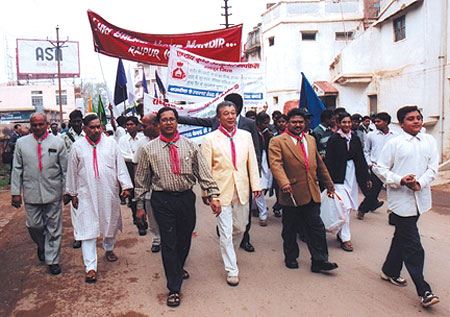 |
| |
| Ambassador Sasakawa walks at the head of an elimination parade passing through the center of Raipur, accompanied by State Health Minister Bandhi at left. |
| |
| |
| Multipurpose health workers respond to a quiz about leprosy elimination (below); children at an elimination rally |
| |
| |
| Even in a hierarchical society such as India's, disease does not discriminate - and neither does the cure. |
| |
Thirdly, I talked about the need for a social movement to enhance leprosy elimination, which I called “broadening the scope of integration: reaching out beyond the leprosy community.” So long as responsibility for tackling leprosy remains in the hands of specialist government agencies, medical institutions and NGOs in a vertical setup, this won't be possible. We need to involve different bodies in the non-leprosy community if we want society to gain a proper awareness.
I also had the opportunity for discussions with Chhattisgarh's chief minister, Dr. Raman Singh, and the state health minister, Dr. Krishnamurthy Bandhi. Chhattisgarh has the third highest prevalence rate among India's states at 5.08 cases per 10,000 population. In common with other states, Chhattisgarh has a significant tribal population (over 34%), and faces a number of challenges in tackling leprosy, including large numbers of people living in remote areas, poor levels of hygiene and nutrition because of widespread poverty, and a high level of social discrimination. Consequently, much effort needs to be put into case discovery and treatment, awareness-building and rehabilitation. But both Chief Minister Singh and Health Minister Bandhi fully understand the issues and showed me they are on top of the situation.
On January 29, I visited a primary health center in a village about 30 kilometers from Raipur, where I met about 20 multipurpose health workers who deal with a wide range of health issues, including maternity care, child care and tuberculosis prevention, not just leprosy.
I was told that these health workers are each responsible for about 5,000 people and do their rounds by motorcycle or bicycle. Many of the homes they visit are far apart, and some can only be reached on foot. When I heard this, I felt quite humble and grateful to them for their dedication.
On this occasion, they had gathered to prepare for a Modified Leprosy Elimination Campaign that was due to begin the next day. I was impressed by their knowledge of leprosy, their grasp of the leprosy situation in Chhattisgarh, and their determination to see the prevalence rate reduced to less than one case in 10,000 by the end of 2005.
A number of them related their experiences of elimination activities, and one account in particular stays with me. It concerned a member of the Brahmin caste, occupying a high position in the community, who discovered he had leprosy. His fingers began to twist out of shape, but he was cured thanks to MDT, and expressed his heartfelt gratitude to health workers. The moral of the story is that even in a hierarchical society such as India's, disease does not discriminate - and neither does the cure.
January 30 is Martyr's Day in India, marking the anniversary of the assassination of Mahatma Gandhi. That morning, several thousand children gathered in a square in Raipur to rally for leprosy elimination. I marched alongside the state health minister at the head of a long procession of political leaders, government workers and boys and girls as it passed through the center of the city, where the marchers handed out pamphlets promoting elimination. While I am confident that these children will grow up to know a world without leprosy, I am keenly aware that we must work even harder if that is to happen. |
| LEPROSY FACTS |
| ● India's prevalence rate has gone down from 57.6 per 10,000 people in 1981 to 3.2 per 10,000 in March 2003 |
| |
|